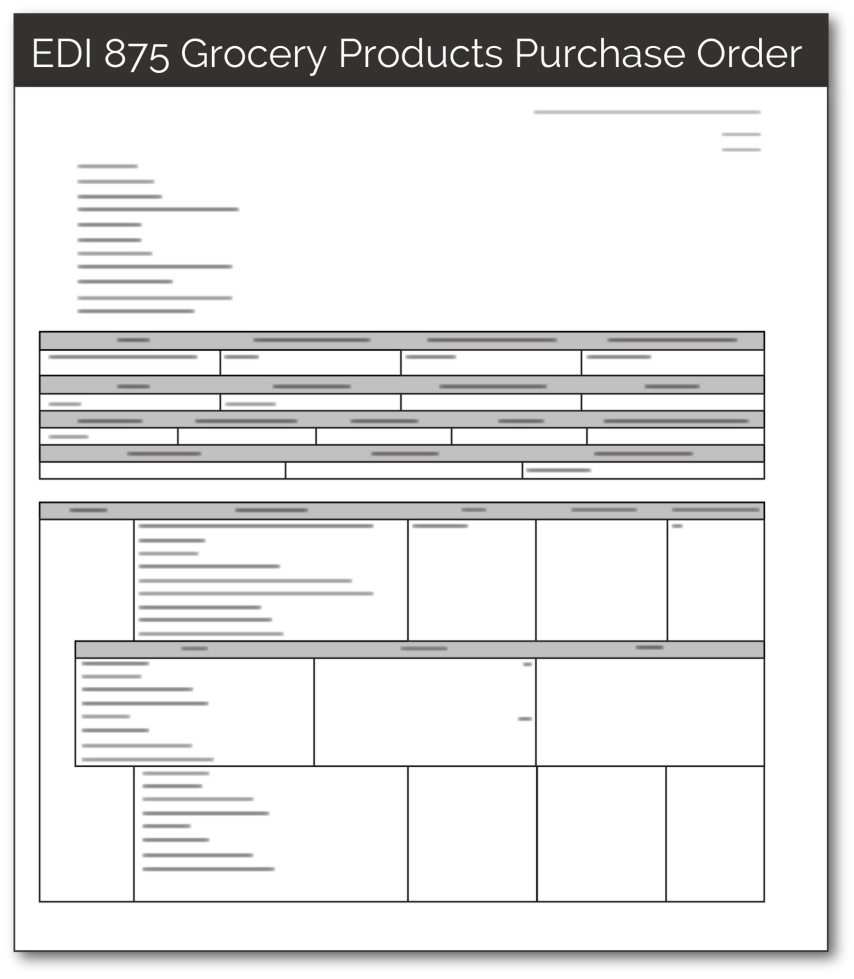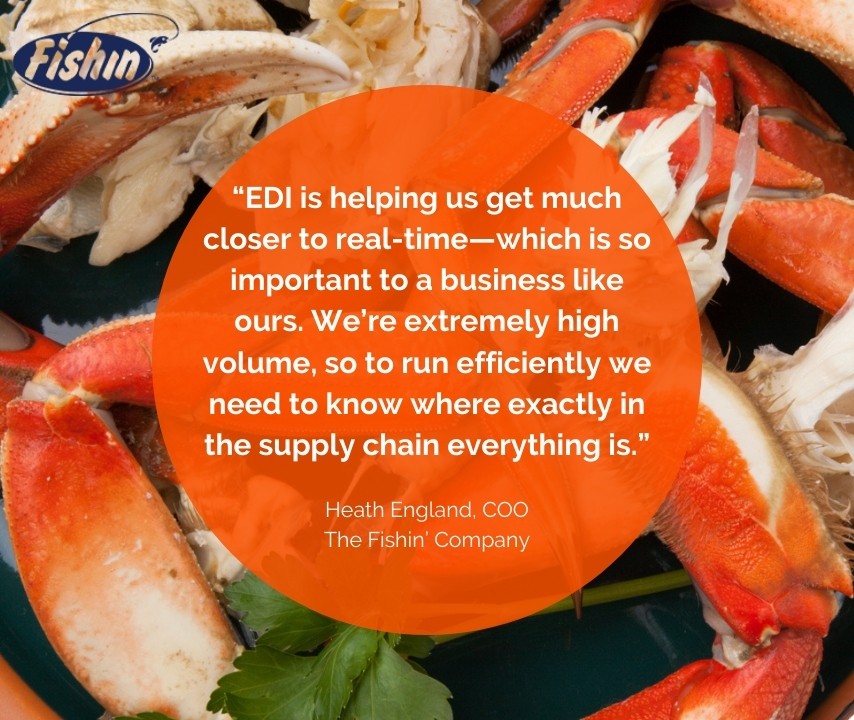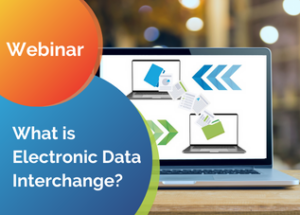EDI 875
Grocery Products Purchase Order

What is an EDI 875?
EDI 875 is a type of electronic data interchange transaction, which is used specifically in the grocery industry. Similar to an EDI 850 Purchase Order, EDI 875 enables a grocer or retailer to order goods from a manufacturer, wholesaler, or other supplier.
EDI 875 documents follow the x12 format set by the American National Standards Institute (ANSI), a not-for-profit organization that regulates EDI formats in the U.S.
What are the Essential Components of EDI 875?
An EDI 875 Grocery Products Purchase Order contains several key pieces of information about an order. These include, but are not limited to:
- Purchase Order (PO) number
- Date of order
- Buyer details, such as store name, address, and contact information
- Vendor details, such as vendor number, address and contact information
- Buyer billing information
- Requested shipping/delivery dates
- Product identifiers, such as SKUs or UPCs
- Item quantity requested
- Unit price and total cost
- Shipping terms, such as preferred carrier and any special shipping instructions
- Proposed payment terms
- Allowances and charges

How do I Use EDI 875?
EDI 875 is the first step in a new order from a grocer or retailer. The grocer sends EDI 875 to a manufacturer, supplier, or wholesaler, to request a new shipment of goods. The vendor will confirm receipt with an EDI 997 Functional Acknowledgement. They will then respond with an EDI 855 Purchase Order Acknowledgement to that can accept the order, accept it with changes, or reject the order.
EDI 875 is used most commonly for orders to food and beverage suppliers. For all non-food suppliers, retailers and grocers should consider using the more general EDI 850 Purchase Order.
What are the Benefits of EDI 875?
EDI 875 is a great option for food and beverage buyers and suppliers. First off, it offers less complexity than the EDI 850, which may contain hundreds of attributes needed by general merchandisers for more complicated and technical products. Because the document can be fully automated, it saves time, enabling buyers to receive goods faster. This automation also reduces errors commonly caused by manual retyping, which can cause shipping mistakes and invoice discrepancies later.

Aside from product specifications, EDI 875 also makes it easy for buyers to communicate their shipping needs. For example, a buyer may have a preferred carrier, or need their goods shipped on a certain date or date-range. Finally, because EDI documents are often encrypted or otherwise protected using SOC-compliant practices, using EDI 875 helps keep sensitive business details more secure than a paper or PDF document.

